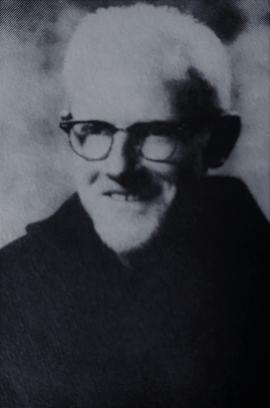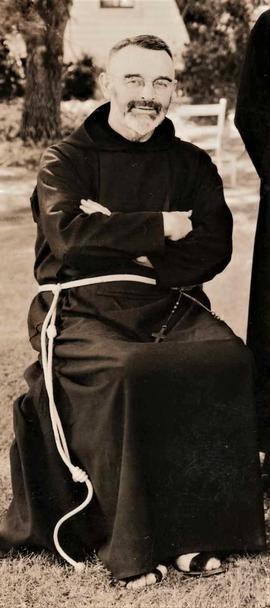Honohan, Patrick, 1905-1976, Capuchin brother
- IE CA DB/198
- Persoon
- 16 September 1905-6 September 1979
James Honohan was born in Donoughmore in County Cork on 16 September 1905. He joined the Capuchin Franciscans in April 1932 and took Patrick as his religious name. Shortly after his solemn (final) profession in April 1936, he was transferred to the United States mission custody. His initial assignment was in St. Patrick’s Friary in Wilmington, Delaware. In 1943 he was transferred to St. Joseph’s Church in Roseburg, Oregon, where he spent three years. In 1946 he came to St. Francis High School in La Cañada Flintridge, California, where he spent thirteen years, serving as cook and sacristan. Following another year in Willington, Br. Patrick returned to St. Francis High School. In 1966 he assigned to Mission Santa Inés, Solvang, California. He again served as cook and sacristan and maintained the mission’s grounds. He died in Santa Inés on 6 September 1979 and was buried in the cemetery adjoining San Lorenzo Friary.
Baptismal name: James Honohan
Religious name: Br. Patrick Honohan OFM Cap.
Date of birth: 16 Sept. 1905
Place of birth: Ballycunningham, Donoughmore, County Cork (Diocese of Cloyne)
Name of father: Andrew Honohan (Farmer)
Name of mother: Hannah Honohan (née Twomey)
Date of reception into the Capuchin Order: 24 Apr. 1932
Date of first profession: 25 Apr. 1933
Date of final profession: 25 Apr. 1936
Missionary activities: Travelled to the United States mission on 4 Oct. 1936
Date of death: 6 Sept. 1979
Place of death: Santa Inés, California
Place of burial: San Lorenzo Friary, Santa Inés, California










